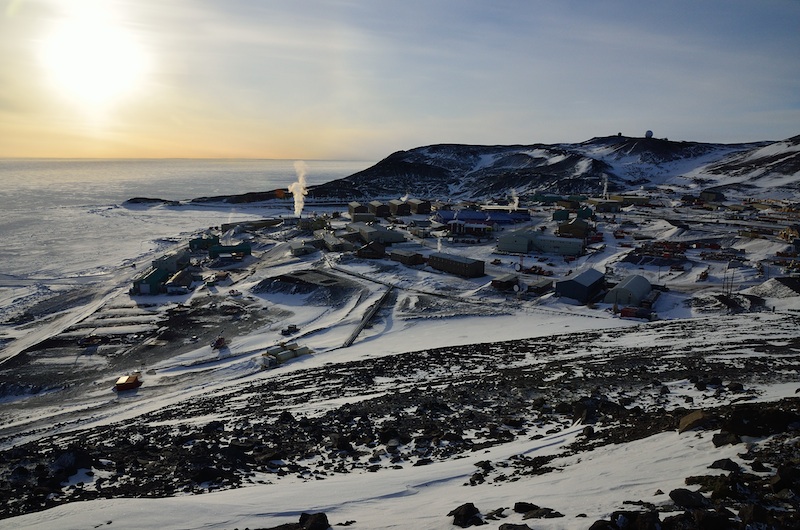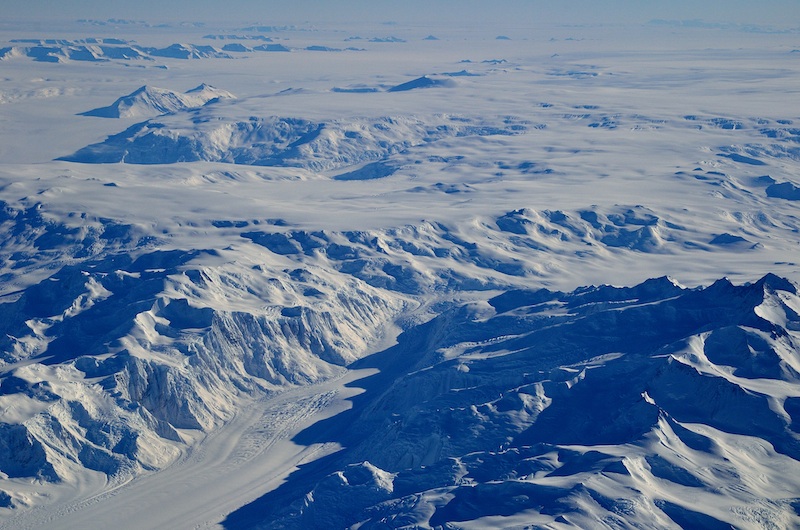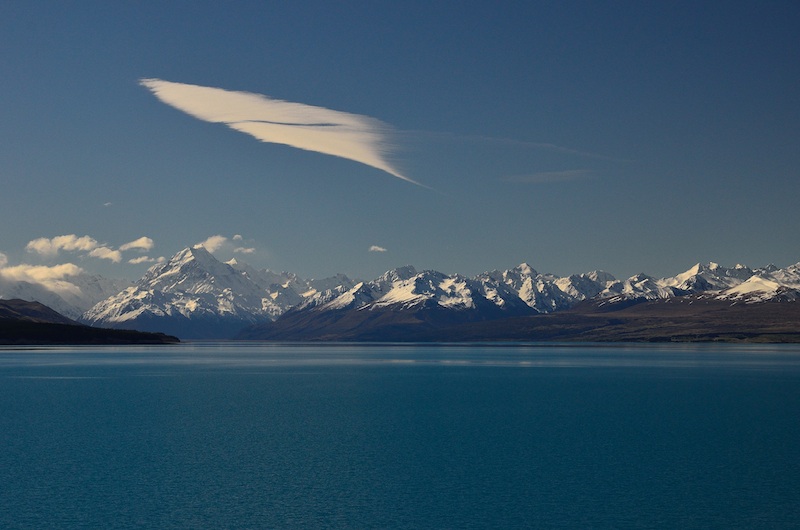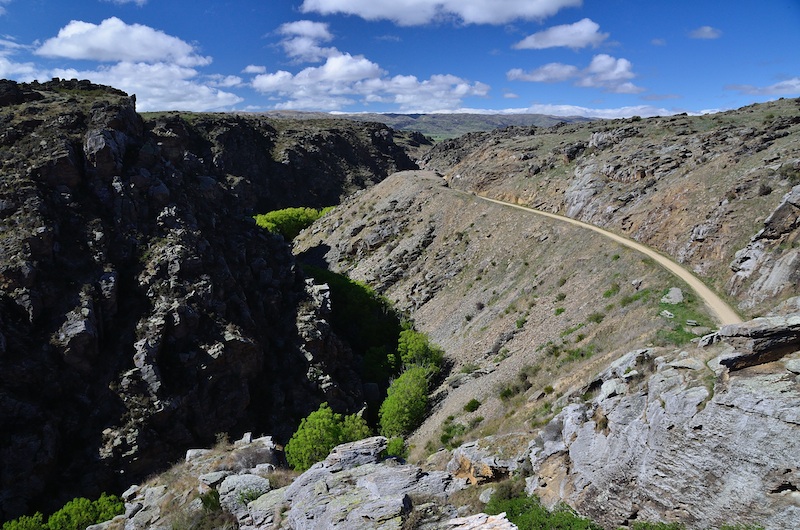My 10th trip to Antarctica ended on Monday (1 October) when I flew back to New Zealand. I was happy that our northbound flight left as scheduled since sometimes these flights can be delayed several days or more if the weather doesn’t cooperate. The flight that arrived from New Zealand on Monday was the start of the McMurdo summer season, known as mainbody. The first flight of mainbody was an Australian owned Airbus A-319. Many of the countries that work in the Antarctic share logistic resources. In this case the Australian Antarctic program flies several A-319 trips from New Zealand to McMurdo each season in return for the US Antarctic program flying several flights from McMurdo to the Australian bases in East Antarctica.
The routine for people leaving Antarctica is that on the day before you are scheduled to leave you drop off all of your checked luggage in a process known as bag drag. After bag drag I took one more hike around McMurdo despite a temperature in the mid negative teens F.
On the day that you are scheduled to leave McMurdo you can check the status of your flight on the McMurdo intranet or on the local TV station which broadcasts regular flight updates. The plane I was scheduled to fly north on left Christchurch at 7AM and landed in McMurdo just before noon.
There are two runways in McMurdo that can accommodate wheeled aircraft, and an additional runway for ski equipped planes. When I arrived in Antarctica in August we landed at the Pegasus white ice runway. This runway is built on the permanent Ross Ice Shelf, but it takes about an hour to drive from this runway to McMurdo. During WinFly a new runway is built on the seasonal sea ice that forms in McMurdo Sound and is known as the sea ice runway. This is the runway we used for our flight back to New Zealand. The advantage of this runway is that it is only a 15 minute drive from McMurdo to the runway. The disadvantage is that the runway is built on temporary sea ice that is only about 70 inches thick, which can make you nervous if you think about landing a full sized jet on just 70 inches of ice. Of course, ice that thick can easily support a large plane, so there really isn’t anything to worry about. Regardless of the ice thickness, I was excited to be flying from the sea ice runway since I’d never flown into or out from the sea ice runway on any of my previous trips. Flying north on the Airbus was also an Antarctic first for me.
To get to the runway we ride in a large bus called a Terra Bus. As with most things in Antarctica the Terra Bus is given a unique name – Ivan the Terra Bus.
Just after we arrived at the sea ice runway we could see the Airbus approaching over the Transantarctic Mountains. It is always a relief to see the plane that will take you back to New Zealand as it makes its final approach. The Airbus landed amid a cloud of blowing snow as it decelerated on the sea ice runway.
The Airbus is setup like a regular commercial jet, so it is much more comfortable than the C-17 military transport plane we flew down to Antarctica on. In addition to being more comfortable each row of seats has a window so you can watch Antarctica slip away as you fly north. You can see a video of our take off from the sea ice runway here.
As we headed north we flew parallel to the Transantarctic Mountains providing one last scenic look at the continent.
We landed in Christchurch at 6PM. As I stepped off of the plane the first thing I noticed was a warm spring breeze. In the span of five hours I had left behind -20 F temperatures and a world of ice and snow for spring in New Zealand, where it was nearly 80 degrees F warmer. The light breeze I felt was a far cry from the biting winds of Antarctica. Rather than trying to shelter every bit of exposed skin from this wind I was able to stand there enjoying the evening.
While it is nice to be back to weather that doesn’t require multiple layers of clothes when you venture outside the thing I’m most happy about when I return to New Zealand is the food. The food in McMurdo is rarely fresh and even the best prepared meals there are primarily a source of nutrition rather than of enjoyment. After checking in to our hotel myself, Shelley, Nick, Peter, and Paul went to dinner at an Italian restaurant. Dinner was fantastic. The taste of fresh food after 5 weeks without it is truly one of life’s great pleasures.
I have about a week before my wife and daughter (Liz and Sabrina) arrive in New Zealand. I’m taking this time to do a short bike tour on the Otago Central Rail Trail. As I drove down to the start of the rail trail I was soaking up the sights of spring. The Canterbury plains outside of Christchurch were covered in vibrant green grass while the Southern Alps still held a coat of thick snow on the highest peaks. As I drove past Mt. Cook, the highest peak in New Zealand, I was treated to the sight of a lone lenticular cloud over the peak and the turquoise waters of Lake Pukaki.
Over the next three days I biked the rail trail through rugged hills and broad valleys enjoying the sights, sounds, and smells of spring. Just a few days earlier it was hard to imagine anything but winter and now it seems like summer is just around the corner.
Thanks for reading about my travels to Antarctica. I hope you have enjoyed this view into the life of an Antarctic scientist.







John! Thank you so much for keeping the blog, I really enjoyed reading it!